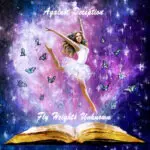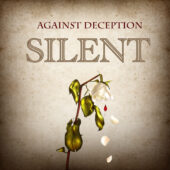The Seven Different Types of Written Music

The Seven Different Types of Written Music
In this article, we will discuss Songbooks, Master rhythm charts, Graphs, and Graphs. Each one of these types is important for musicians to learn. By learning to read music notation, a musician can learn to improvise apart from the notes and chord symbols in the song. A vocalist, on the other hand, can improvise by interpreting notated melody lines.
Songbooks
There are various types of music. In the world of music, songbooks are a great example. A songbook is an album of multiple tunes, typically with the same information as a sheet of music. The difference lies in the way that the chords are written. While sheet music is generally written for keyboard instruments, songbooks are typically composed for other instruments. They may be categorized by style or by decade.
A songbook usually contains the name of the composer and songwriter, as well as the name of the lyric-writer or arranger. If the music is traditional or old folk, however, no name is listed. In this case, a title such as Traditional or Old Folk Music may appear in place of the composer’s name. Similarly, a songbook may also include the word Traditional.
Faux songbooks are illegal copies of a book. These are a way for amateur musicians to produce fake books of songbooks. The book’s cover may be a fake or a reprint of a real book. These fake books are often illegal and not backed by the original publisher. Fake songbooks can be purchased from music union papers and trade magazines. Sometimes, they are even sold by instrument stores. Although illegal, fake books are beneficial to musicians because they help them learn new tunes.
Master rhythm charts
Rhythm charts are a great way to map out songs quickly. They save time during rehearsal and can even be archived for later reference. Master rhythm charts combine the familiarity of standard musical notation with a sketch of the original tune. They provide enough specifics to make the music interesting and allow the performer to add their creativity. In addition, they give musicians a way to follow along with a song, regardless of whether they’ve never played it before.
While we live in a digital age, paper is still important. It is impossible to replace paper completely, but technology can help. Some musicians can leave their suitcases at home and scan music onto their devices for later reference. Jazz players can download 6th Edition Real Books to their phones, and singers can get last-minute lyrics via the internet. But to make the most out of these innovations, chart suppliers need to provide the appropriate chart to play each style.
In addition to music notation, master rhythm charts are used to play popular styles. For singers, lead sheets are typically used. But, as with most musical styles, reading and writing master rhythm charts require fluid notation abilities and improvisation skills. By contrast, fully notated music includes all the notes, rhythms, dynamics, and notational expressions. Most professional recording sessions and musical performances require fluid note reading and rhythmic improvisation skills.
A master rhythm chart provider will offer the appropriate type of graph to fit each type of music. If you are a beginner, it can be helpful to seek out a chart provider who provides the right type of graph for the particular style of music you’re playing. Then, you can learn how to play the piece more intuitively. If you’re looking for high quality and affordable chart provider, read on!
The seven different types of written music are based on their form. In other words, chord charts are used when specific parts of the song are improvised. They’re also used when last-minute changes are needed. The form is known, but the instruments aren’t. Therefore, it’s essential to have a steady time and chords to play from the chord charts.
Graphs
The social connotations of musical styles vary from generation to generation, and these change as a result of time and culture. Today, people associate jazz music with sophistication, while one hundred years ago, jazz music was considered lewd and uncultured. The social connotations of music vary, but the underlying principles remain the same. Here are some graphs showing how musical styles vary across generations and cultures.
In western music, note values may range from a whole step lower to a half-step lower. In some cases, a composer may use a single note in three or more parts of the score, eliminating the need for smaller durations. Musical notes may also contain accidentals, which provide extra information about the music. Using accidentals to write music, for example, allows all twelve notes on a five-line staff.
As the scales are based on different music genres, it is possible to interpret musical preference in terms of these factors. The highest loadings for these factors correspond to classical, jazz, and heavy metal. The lowest loadings of these factors are found in Celtic and jazz music, while the least popular genres are rock, heavy metal, and punk. Intense, on the other hand, corresponds to a more emotional style.
The findings of study one suggest that people are highly sensitive to musical properties and influenced by the content and type of music. In addition, music preferences have strong social connotations, and this study also reveals a relationship between the quality of music and the personality traits of the listener. If these factors are present in study two, the MUSIC model would be a good candidate for predicting music preferences.
Popularity varies greatly, and social connotations change. Certain musical genres have a distinctly different impact on different people. These differences in taste and style are reflected in the frequency of popularity. Certain musical genres are more likely to trigger social stereotypes than others. As a result, some people are more likely to listen to certain types of music than others. For example, a song in a certain genre may be more popular in one country than in another.
One common type of musical notation is the chord chart. This type of musical notation describes basic rhythmic and harmonic information. Professional session musicians generally use a chord chart when playing with a band. Using a chord chart, the musicians are expected to improvise the individual notes of each chord, as well as to use appropriate ornamentation and counter melodic patterns and bass lines. And they also have to improvise to meet a musician’s needs and responsibilities.






Comments
This post currently has no comments.